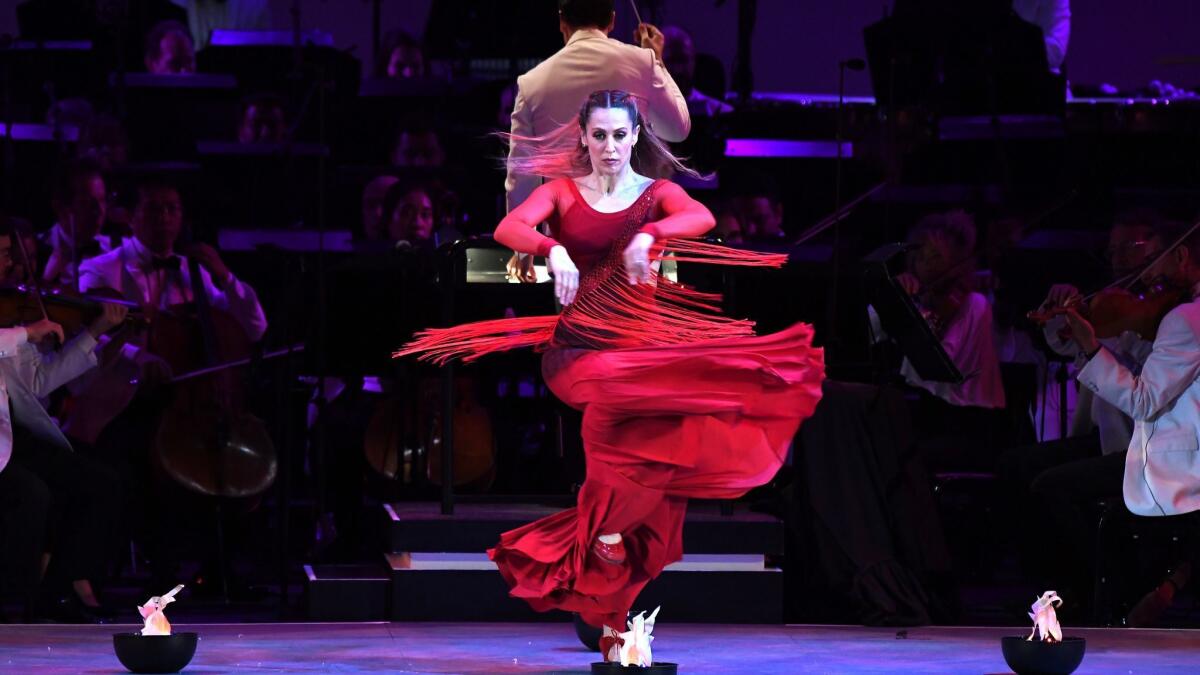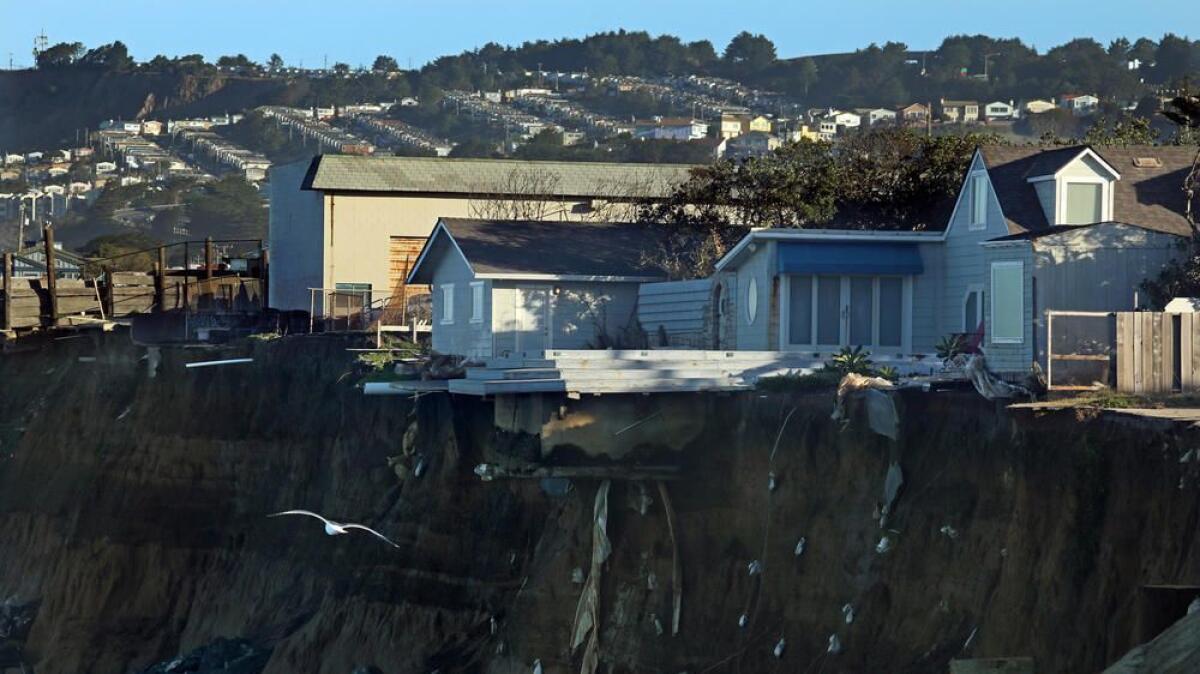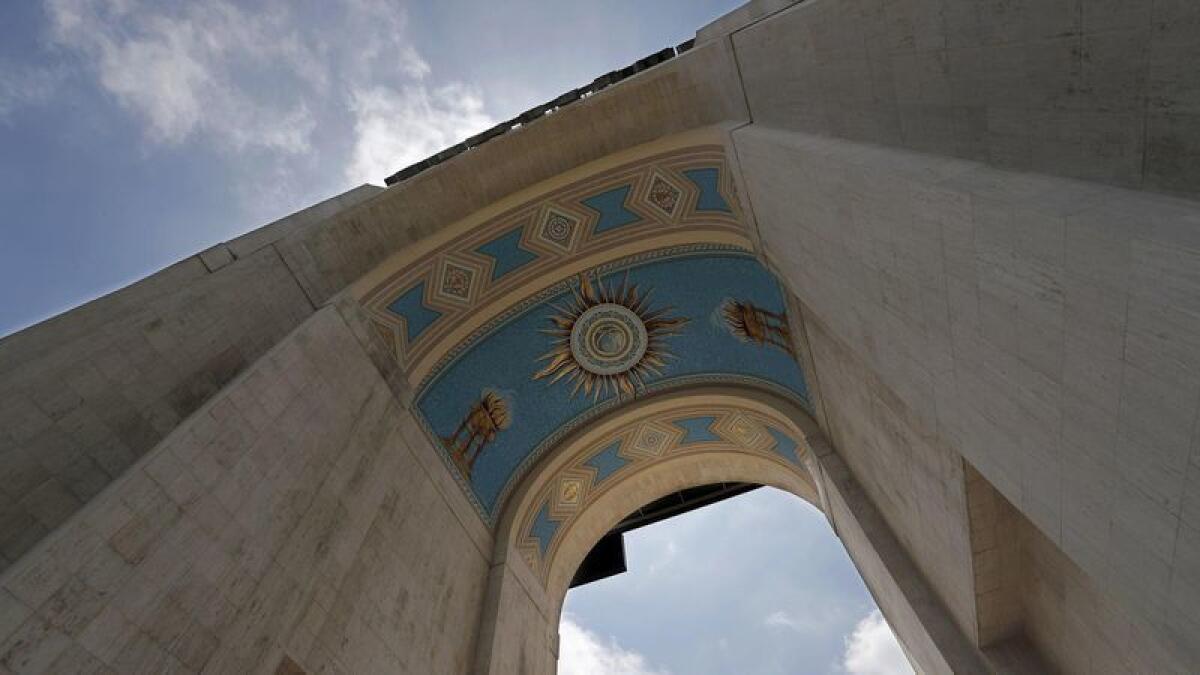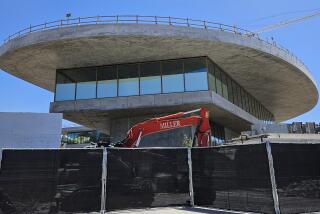Newsletter: Essential Arts: Fiery missives for Peter Zumthor and the architects of the Miracle Mile
- Share via
Happy weekend! I’m Los Angeles Times staff writer Carolina A. Miranda, back after the holiday and those earth-rattling quakes with your essential arts news:
Not-so-miraculous mile?
Because Times art critic Christopher Knight and I have our reporting cycles in sync, we both turn our attention to LACMA and its environs this week.
Knight writes a fiery open letter to LACMA architect Peter Zumthor after reading an interview in which the architect stated that his building’s design gives the objects in an encyclopedic museum their context. Writes Knight: “Like the museum’s director, Michael Govan, you have had no experience with encyclopedic art museums prior to your LACMA involvement — and it shows.” So. Much. Burn.
In the meantime, as museums on the Miracle Mile build and rebuild, I have a look at the urbanism plans — actually, the non-plans — for this new cultural destination, which will also have a Metro stop by 2023. “There is no there there,” architect and urbanist Dana Cuff tells me. “There is no urban design that has been created for this chunk of Wilshire that will be one of the most pedestrian and populated parts of the city.”
Everything dance
England’s Royal Ballet landed in L.A. for the first time in years with a performance of “Mayerling.” Contributor Lewis Segal had some bones to pick with the choreography, but reports that the dancing “reminded Angelenos of what high satisfaction a stylistically unified world-class ensemble can provide.”
Times arts reporter Makeda Easter, meanwhile, has an in-depth report on how L.A.’s skyrocketing rents are pushing dance studios out of business. “It’s not just a local issue,” she writes. “Dance spaces across the country are threatened.”
Easter also looks at how choreographer Wayne McGregor has employed an artificial intelligence tool to create a new dance. The work premieres at the Dorothy Chandler Pavilion this weekend as part of the collaboration “Adès & McGregor: A Dance Collaboration” with Thomas Adès.
Classical notes
Speaking of Thomas Adès, contributor Catherine Womack sat down with the British composer to talk about “Inferno,” his orchestral work for ballet, which received rapturous applause when it premiered at Disney Hall in May. The work, he says, is “a thumbnail map” of the journey through Dante’s hellfire.
Richard S. Ginnell was at the kickoff of the L.A. Phil’s Classical Tuesdays and Thursdays series at the Hollywood Bowl. Conductor Juanjo Mena was on the podium for a show that provided some “whole-hog laughs” and a “rhythmically solid interpretation” of Berlioz’s “Symphonie Fantastique.”
And since it’s all about the Bowl, Times classical music critic Mark Swed reviews the L.A. Phil’s recent “Falla and Flamenco” night, led by newly promoted associate conductor Paolo Bortolameolli, and featuring a collaboration with Siudy Flamenco Dance Theater. It was, he writes, “an enthusiastic, multihued performance.”

On the stage
Imagine a play where everything went wrong. Now imagine that as a play. “The Play That Goes Wrong” at the Ahmanson Theatre is all about a performance that is “a stage manager’s worst nightmare,” writes theater critic Charles McNulty. “The show might seem trivial for such a prodigious venue,” he adds, “but the public’s appetite for silliness appears to be in direct proportion to the gravity of the times.”
Elsewhere, The Times’ Daryl H. Miller reports on a pair of “less-is-more” musicals — high-profile productions intimately staged at small theaters — including the Chance Theatre’s “Ragtime” and Celebration’s “The Producers.”
In the galleries
Contributor Leah Ollman has been hitting the galleries. She reviews a show about the life, work and disappearance of Dutch artist Bas Jan Ader at Meliksetian Briggs, and the ways in which artist Jacqueline Woods is creating new contexts for found photographs in her show at Duncan Miller Gallery.
At Nonaka-Hill, Ollman also reviews a show of “astonishing” ceramic sculptures by Masaomi Yasunaga. If they “were parts of speech,” she writes, “they would be once both nouns and verbs.”
Meanwhile, Times art critic Christopher Knight goes coastal at the Getty Villa’s new show, “Buried by Vesuvius,” which explores the history of the Villa dei Papiri, the Roman archaeological site that inspired J. Paul Getty’s villa design. This includes a naughty sculpture that features the god Pan and a goat getting frisky.
Last but not least, The Times’ Deborah Vankin has been hanging out with Hammer Museum preparator Jason Pugh, whose job it is to fry the sunny-side up eggs that appear in Sarah Lucas’ installation at the museum.

What I’m reading
Last week, my colleague Rosanna Xia did an epic report on how California’s coastal cities are contending with rising sea levels. (If you haven’t read it, drop everything.) It’s an issue that architects and urban designers have been contending with for years.
In 2010, New York’s Museum of Modern Art did an important exhibition on the subject called “Rising Tides: Projects for New York’s Waterfront” that served as a warning in advance of Superstorm Sandy. Now the city is at work on a flood attenuation project that will take the form of a park. In flood-prone Miami, architects are raising buildings off the ground. Coastal engineers in Louisiana (currently facing Tropical Storm Barry) are working on ways to reestablish natural waterways that deposit sediment so islands and other buffers aren’t swept away.
In 2015, I reported on how the architects at the Chilean firm Elemental (led by Prtizker Prize-winner Alejandro Aravena) were working on an urban plan for the city of Constitución to make it more resilient to regular flooding and the occasional catastrophic tsunami.

Ready for the weekend
Matt Cooper has his weekend picks all lined up, including a jam of show tunes by Kristin Chenowith at the Hollywood Bowl.
In Datebook, I’ve got all the latest art shows, including an exhibition at LAST Projects inspired by furtive spaces that cater to sex and desire.
Plus, novelist Laila Lalami, whom I had the great pleasure of interviewing at the Times’ Festival of Books, is heading up the next Los Angeles Times Book Club event on July 30.
In other news…
— Hyperallergic parses convicted financier Jeffrey Epstein’s art world connections.
— For 18 years, Mark di Suvero’s sculpture “Declaration” has stood on the Venice Beach boardwalk. This summer, it will be removed unless somebody buys it. (CC: rich guys at Snapchat.)
— Artist Betye Saar and filmmaker Alfonso Cuarón will be the honorees at LACMA’s Art + Film Gala for 2019.
— Andrew Russeth has a report on the controversial makeover of the Indianapolis Museum of Art as Newfields, a Place for Nature & the Arts.
— 500 Capp Street, the house museum that belonged to the late David Ireland in San Francisco, has laid off its head curator.
— Hammer Museum curator Anne Ellegood has been named the new executive director of the Institute of Contemporary Art Los Angeles.
— A high school student has unlocked the mystery of a sunburst mural at the L.A. Coliseum.

— For transgender opera singers, a transition can mean finding a new voice.
— A homophobic slur was scrawled on the door of the Fountain Theatre in East Hollywood.
— Phil Freelon, who served as the lead architect on the National Museum of African American History and Culture in Washington, D.C., and helped build other structures that paid tribute to black life, has died at 66.
— Critic Mark Lamster has been hanging out at a house outside Houston that gives new meaning to the words “architectural erection.”
— Silver Lake’s happy foot/sad foot sign is moving and El Lay will never be the same.
And last but not least…
The Simpsons reimagined as a Russian art film. (Hat tip, Weisslink.)
[email protected] | Twitter: @cmonstah
More to Read
The biggest entertainment stories
Get our big stories about Hollywood, film, television, music, arts, culture and more right in your inbox as soon as they publish.
You may occasionally receive promotional content from the Los Angeles Times.











